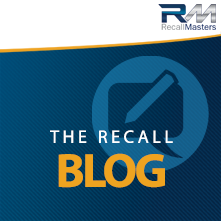Outsourcing Customer Communications – Should the Service Department Worry?
Outsourcing Customer Communications – Should the Service Department Worry?
There are few things sales managers find more painful than looking into their CRM and finding unanswered sales leads — whether those leads sat for hours or sometimes, days, each is a missed opportunity. That’s why there are so many outsourced BDC services that provide lead follow-up for dealers, ensuring customers receive a speedy, accurate response. And now, it seems that at least one OEM has decided to become a solution provider in this space.
On April 9, 2018, General Motors launched a “Dealer Sales E-mail Lead” program. According to a recent article in Automotive News, this outsourced BDC-type service is staffed 24-hours per day, 7 days a week, with highly trained specialists that excel at writing. Naturally, the focus is to ensure that any dealer customers who submit leads receive quick and accurate responses, no matter what time of day they are converting.
While this program is certainly something which some dealers may need, it’s unclear whether it will be more effective than any other outsourced BDC. Of course, with the power of the General Motors name behind it, one could assume these agents, in fact, have more product knowledge and better access to inventory than most non-OEM outsourced BDCs. But, there is one key component missing from GM’s lead follow-up… service leads.
If an OEM provides 24/7 communications to a dealership’s customers, the exclusion of service customers is a huge missing piece Here’s why. The OEM has all the information at its disposal regarding existing TSBs and recalls. I assume that they could even pull up a customer’s VIN via this program and have the entire service history of the vehicle, regardless of where it was purchased. Quickly and efficiently notifying customers about recalls is increasingly important in this media-saturated world, especially if the recall is safety-related.
Internet leads close at an abysmal rate. Yes, answering them faster can increase that percentage, but it will never come close to the percentage of customers your dealership could retain in service and potentially sell another vehicle to. Today’s customers want immediate service and prompt communication – is your dealership’s service department delivering that? If not, see what can be done to tighten up on customer communications and look for partners who can help you reach out to and retain those customers.
Ideally, your service department should know the recall status of every vehicle that pulls into your service drive. This extra attention to the customer experience can provide your dealership with a competitive edge – the kind of differentiation that makes consumers loyal brand advocates and keeps them coming back for more. And that also includes vehicle sales.
I wish this GM program every success — with a strong focus on responses that are personalized and relevant, dealers could certainly increase customer retention, safeguard their valuable service revenue and, at the same time, respond to sales leads. This would be the best all-around solution. However, when it comes to service, dealers need to be their own champions – for now!

